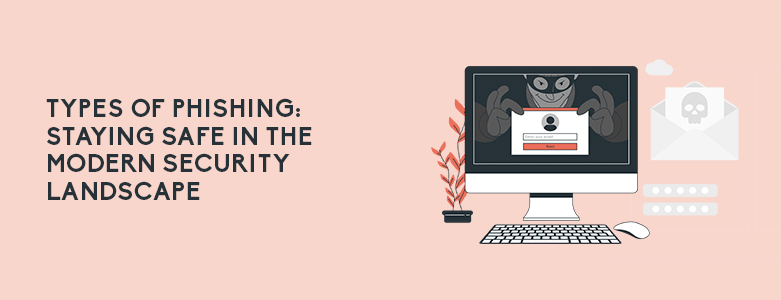Phishing attacks are becoming more prevalent in recent years due to its effectiveness as an attack to businesses and individuals. This is why Philippines businesses must keep their security measures up to date to help mitigate the risk of these attacks. However, there is only so much a business can do to ensure that their data is safe. Individual employees and users also have the responsibility to educate themselves by knowing the types of phishing attacks out there.
Knowledge is power. By knowing how different phishing attacks work, users can avoid making mistakes that could either end up costing them or the business. So what are the types of phishing out there now in 2023?
Types of Phishing attacks in 2023
Email Phishing

The most common form of Phishing, a malicious email message designed to deceive users into revealing confidential information. Attackers aim to pilfer account credentials, personally identifiable information (PII), and even corporate trade secrets. The motivations behind such attacks can vary, especially when specific businesses are targeted.
Spear Phishing

Spear phishing takes email deception to the next level. These attacks are tailored to specific individuals within an organization, typically those with high-privilege accounts. Attackers endeavor to coerce them into divulging sensitive data, transferring funds, or unwittingly downloading malware.
Link Manipulation

Messages in link manipulation attacks contain seemingly innocent links that redirect recipients to fraudulent sites. These sites mimic legitimate businesses, luring users to enter their credentials on a spoofed login page, ultimately surrendering them to attackers.
Quishing Attacks

A relatively novel addition to the phishing family, quishing attacks target individuals and businesses through QR codes. Scammers embed malicious links in these codes, directing unsuspecting victims to attacker-controlled servers, where sensitive information may be compromised.
Whaling (CEO Fraud)

In whaling attacks, high-profile employees, often executives, are the prey. Attackers impersonate CEOs or other top executives to convince their targets to make fraudulent fund transfers. While this falls under the phishing umbrella, it’s a high-stakes, highly targeted game.
Content Injection

Content injection attacks occur when an attacker infiltrates an official website and introduces malicious content. Users, unsuspecting, are then confronted with malicious pop-ups or are redirected to phishing sites.
Smishing (SMS Phishing)

In smishing attacks, cybercriminals target smartphones via SMS messages. They send texts with enticing links promising discounts, rewards, or free prizes, tricking users into visiting malicious sites.
Vishing (Voice Phishing)

Vishing involves the use of voice-changing software to leave convincing messages or engage in phone calls with victims. Attackers manipulate their voices to impersonate trusted entities, persuading victims to divulge sensitive information.
“Evil Twin” Wi-Fi

By spoofing free Wi-Fi networks, attackers trick users into connecting to malicious hotspots. This allows for man-in-the-middle exploits, compromising data transmitted over the network.
Pharming

Pharming is a two-phase attack involving malware installation and redirection to a spoofed website. Attackers aim to steal account credentials, sometimes using DNS poisoning to redirect users to fraudulent domains.
Angler Phishing

Using social media platforms, attackers respond to posts, masquerading as official organizations. Their goal: to coax users into revealing account credentials and personal information.
Watering Hole

In this method, attackers identify websites frequently visited by their targets. They compromise these sites to deliver malware, redirect users to spoofed sites, or infiltrate local networks to exfiltrate data.
To learn more about how you can educate your users on ways to prevent the different types of Phishing, you can refer to one of our previous articles or contact us at marketing@ctlink.com.ph.


One Response